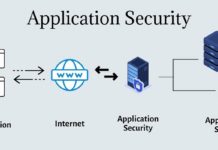Many IT and development departments in companies have shed the shackles of closed source and are turning to open-source software. After all, in the course of the digital transformation, they have to implement rapidly changing IT requirements and drive innovations. To do this, they need solutions that support open standards, and interfaces to enable smooth data exchange while preventing the emergence of IT silos and the dreaded vendor lock-in – solutions that can be flexibly adapted and seamlessly combined. In short: Solutions that offer everything that proprietary software does not.
Open source helps IT and development departments achieve unprecedented agility. What’s more, they benefit from the innovative power of a huge community that constantly produces new solutions to problems and challenges and reliably eliminates weaknesses and errors. Proprietary software providers simply cannot keep up with this pace of development, even if they employ several hundred or even a thousand developers. Their business models are based on dependency, compartmentalisation and coercion, which nips creativity and innovation in the bud, both in their own development and on the customer side.
All of these insights have changed the software landscape in companies and ensured that open source also reaches the specialist departments. There, modular software suites based on open source are replacing the old application monoliths that cause employees a lot of extra work in day-to-day business – be it because data cannot flow freely and employees have to transfer it manually, or because important business functions are missing and complicated workarounds had to be devised.

Andrea Wörrlein, Managing Director of VNC in Berlin, Germany and Board Member of VNC AG in Zug, Switzerland
Open source, on the other hand, opens up a universe of possibilities: Business departments can draw from a rich set of solutions and easily evaluate individual tools before making decisions. Step by step, in consultation with their IT department, they build an ecosystem of applications that fits their specific problems and offers seamless integrations – across departments, and even across company boundaries. This creates highly automated, digital end-to-end processes without incompatibilities or media gaps. The solutions are also fit for the cloud, offering the strategic flexibility to change the deployment model as needed.
There is no question that business software based on open source has long been enterprise-ready, and more and more companies are recognizing this. Software that combines openness and interoperability with high security and rich functionality, as well as low cost of ownership and world-class support – it may sound too good to be true, but it is already a field-tested reality in many enterprises.















































































